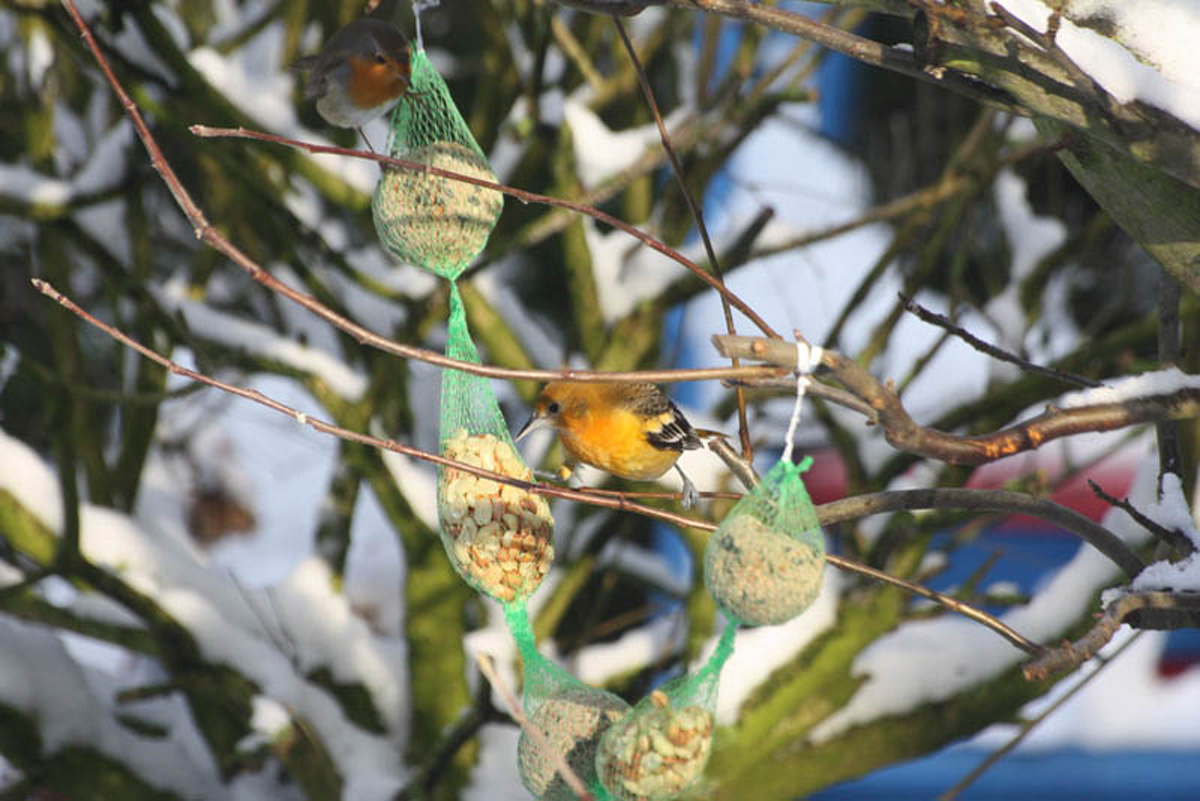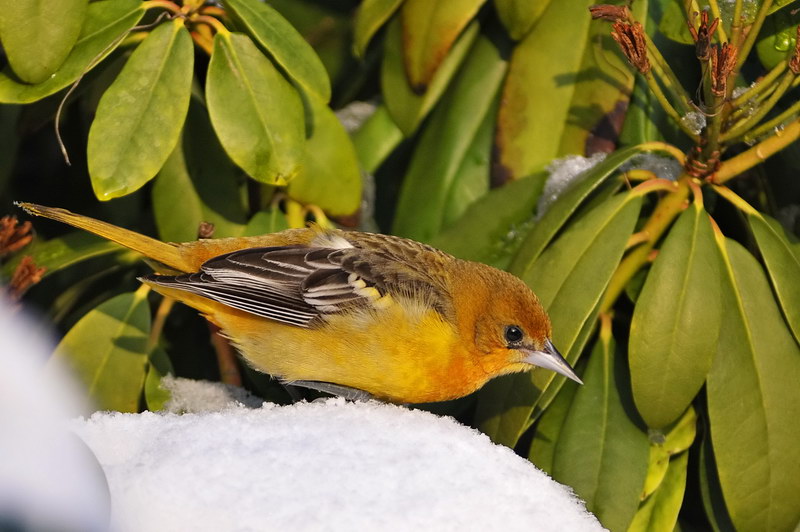
On Monday 4 January 2010 Max Berlijn called me at work at 9:32 and strongly suggested me to check my mail immediately. There was an email from Marc Argeloo, and it was forwarded to him by at least two other persons. It contained a jpg-file. I opened the jpg and there it was, a Baltimore Oriole Icterus galbula! It was photographed by somebody from Alkmaar, the place where I currently live. I immediately forgot that I was at work and that there were very important things waiting for me...
I checked the online telephone guides and I finally came upon the mother of the person who sent the picture to Johan Bos, who sent it eventually to Marc Argeloo. She gave me the phone number of his work, so I called him directly. He told me the bird was seen in the garden of his neighbour, but didn't want to reveal the location immediately, as he want to discuss the matter with is neighbour (very understandably!). I begged him to reveal the neighbourhood, the street, a district or something at least, so he gave me the general area. I took the train back to Alkmaar (I work in Amsterdam), phoned my girl-friend to search for other families with that particular name of the person who sent the picture. She gave me another number, so I decided to check all the gardens there. At the address my girldfriend gave me, there was nobody in, so I asked for information to one of the neighbours and he finally gave me the address of the person in question (a block away). There was nobody at home, but the neighbours were. In the meantime, I met several other birders and we were discussing who had to go to the neighbours place. I said I was to intimidating (2 meters tall, skinheaded and large blue eyes), Sylvan Laan was the most likely candidiate, since he was most reminiscent of Damon Albarn in his Park Life years! In the end, Ruud Brouwer decided he could not stand this women's chit-chat anymore, so he knocked on the door and came back only after 20 minutes, while digesting hot coffee and apple cake! Moreover, he said this was the place, but the bird was only seen on Saturday 2 January for a few minutes.
Rest of the day we were looking for the bird, but only a few new birders arrived and we had no succes. Roelof the Beer was shown a picture from 24 december 2009 by Lia Biesterveld, when the bird was photographed in the Ceresstraat, just 100 meters away from the garden on 2 January.
The next day I had to work, but a big search party would be there starting to search at first light. At around 9:30 Debby Doodeman and Miranda Zutt relocated the bird in a pine tree in the Istriastraat and it was eventually seen in several gardens feeding on bird tables and fatbulbs, mainly in the Ceresstreet.
I could leave work only at 14:00 hours in Amterdam, but I arrived less than an hour later and could see the bird immediately in the same tree it was relocated! The next weeks the bird showed itself very well and it stayed till at least 14 April. It was slowly getting into summer plumage and sometimes it was heard singing!
The bird was a first-winter, because of its pointed tail-feathers and a male by its deep orange colour on the breast combined with the dark-centered scapulars.


The bird seemed to be present since 2 December 2009 (cf Dutch Birding 32(1): 73-75, 2010). It was accepted as a wild bird, and thus the second record for the Netherlands. The first record was a female trapped on 14 October 1987 which was kept in captivity until 18 October when it was released after being described and ringed; it was sighted in the field on 19 October and trapped again on 20 October (from Rare Birds of The Netherlands, 2nd edition by Arnoud B van den Berg en Cecilia A W Bosman, 2001). Elsewhere in Europe there are 23 records in the UK (till 2007), two from Ireland, four from Iceland, one from Norway and only one from the Azores (from Rare Birds Where and When by Russell Slack, 2009).
Go to the main-index, the 2010-index or the Rufous Turtle-Dove?